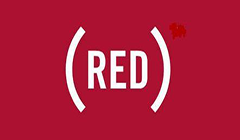
RED certification introduction
12, 2016, Member States should change the Directive. Converted into Member State law, the original R&TTE Directive (1999\5\EC) was also abolished.
As of June 13, 2016, Member States should adopt the New Radio Equipment Directive (RED); from June 13, 2017, products that comply with the old R&TTE Directive will not be allowed to be sold in the EU market.
The purpose of the new directive is to clarify the scope of spectrum use, improve the effectiveness of spectrum use, and facilitate the implementation of regulations and market surveillance between member countries.
Before a wireless product can be legally sold in an EU country, it must be certified according to the RED Directive and must also have a CE-mark. Wireless remote control products must comply with the RED Directive RED 2014/53/EU.
RED certification scope
1. Short-range wireless remote control products (SRD) such as: remote control toy car, remote alarm system, remote doorbell, remote control switch, remote control mouse, keyboard, etc.;
2. Professional radio remote control products (PMR) such as: professional wireless walkie-talkie, wireless microphone, etc.;
3. Wireless telephone CTO, CT1, CT1;
4. ISDN (Digital Telephone Product);
5. DECT (Enhanced Digital Radiotelephone);
6. Mobile phone GSM, CDMA test;
7. Bluetooth products such as: Bluetooth headsets;
8. Inductive data transmission equipment operating at <9 kHz;
9. Wireless broadcast receiver equipment.
The need for RED certification
RED certification indicates that the product has met the safety requirements of the EU Directive; it is a commitment of the company to consumers, increasing the level of consumer trust in the product; products marked with CE mark will reduce the risk of sales in the European market:
1. The risk of being detained and investigated by the customs;
2. The risk of being investigated by the market surveillance agency;
3. The risk of being accused by competitors for competitive purposes.
RED test project
1. Electromagnetic compatibility test (EMC test);
2. Safety test LVD (in the new instruction, this test is also required for battery input RF products);
3. Conduct radio communication equipment testing (RF testing) in accordance with European ETSI standards;
4. Notification of information on the spectrum allowed in Europe;
5. CTR (TBR) test;
6. Electrical safety and health protection testing (SAR assessment);
Information required for RED certification
1. User manual;
2. Circuit schematic diagram;
3. Block Diagram (also called module function diagram);
4. Circuit trace diagram (PCB LAYOUT);
5. Circuit placement diagram (PCB placement);
6. Operational description (interpretation of the block diagram);
7. BOM LIST;
8. Label (label);
9. Antenna specifications (or antenna gain map);
10. Charger LVD report;
11. Fixed-frequency software (also called fixed-frequency program. Enables the transmitting module to be continuously transmitted at a certain frequency point, generally BT and WIFI must be provided).
NTEK Advantages: When a company or manufacturer is doing RED certification, please look for an authoritative RED certification body. NTEK is a professional and authoritative RED certification body. Committed to RED certification services for many years, the company has built the industry's top electromagnetic compatibility (EMC), radio frequency (RF), security, battery, SAR laboratories to provide customers with quality testing and certification services.
If you have a product that requires RED certification, please call customer service at 076923301618, we will provide you with professional services.
Tel:+8617722308370
Email:abel.zhang@gdntek.org.cn
skype:13790184018
